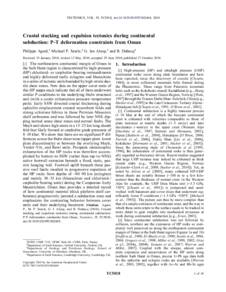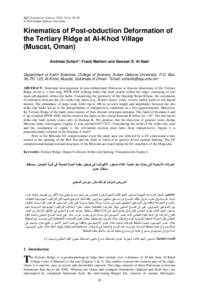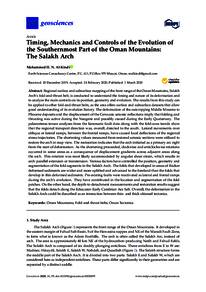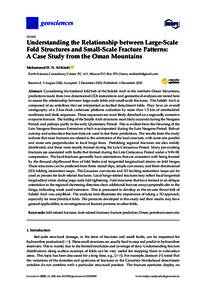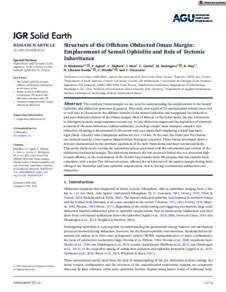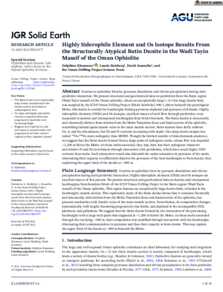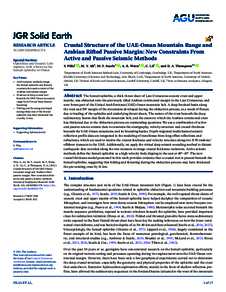Document
Crustal stacking and expulsion tectonics during continental subduction : p-t deformation constraints from Oman.
Identifier
DOI: 10.1029/2010TC002669
Contributors
Publisher
American Geophysical Union.
Gregorian
2010-10
Language
English
Subject
English abstract
The northeastern continental margin of Oman in the Saih Hatat region is characterized by high-pressure (HP) chloritoid- or carpholite-bearing metasediments and highly deformed mafic eclogites and blueschists in a series of tectonic units bounded by high-strain ductile shear zones. New data on the upper cover units of this HP nappe stack indicate that all of them underwent similar P conditions to the underlying Hulw structural unit (with a cooler exhumation pressure-temperature path). Early SSW directed crustal thickening during ophiolite emplacement created recumbent folds and strong schistose fabrics in these Permian-Mesozoic shelf carbonates and was followed by later NNE dipping normal sense shear zones and normal faults. The Mayh unit shows high strain in a 15-25 km long sheath fold that likely formed at carpholite grade pressures of 8-10 kbar. We show that there are no significant P differences across the Hulw shear zone (upper plate-lower plate discontinuity) or between the overlying Mayh, Yenkit-Yiti, and Ruwi units. Postpeak metamorphic exhumation of the HP rocks was therefore accomplished by bottom-to-SSW (rather than top-to-NNE) active footwall extrusion beneath a fixed, static, passive hanging wall. Footwall uplift beneath these passive roof faults resulted in progressive expulsion of the HP rocks from depths of ∼80-90 km (eclogites) and mainly 30-35 km (blueschists and chloritoid-/carpholite-bearing units) during the Campanian-Early Maastrichtian. Oman thus provides a detailed record of how continental material (thick platform shelf carbonates) progressively jammed a subduction zone and emphasizes the contrasting behavior between cover units and their underlying basement.
Member of
ISSN
0278-7407
Resource URL
Category
Journal articles

